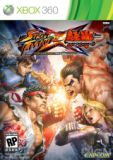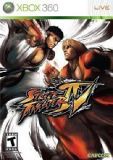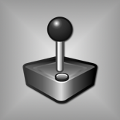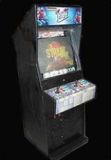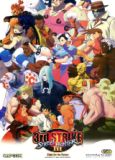Games
Displaying 3261-3270 of 15808 results.
Sony Playstation 2
Release Date: July 22, 2004 |
Genre:
Japanese release
Sega Dreamcast
Release Date: December 16, 1999 |
Genre: Action, Fighting
Street Fighter III: Double Impact, known as Street Fighter III: W Impact (ストリートファイターIII Wインパクト) in Japan, is a versus fighting game developed by Capcom exclusively for the Sega Dreamcast. It is a compilation of two arcade fighters - Street Fighter III: New Generation and its update, Street Fighter III 2nd Impact: Giant Attack. As the name suggests, Street Fighter III is a sequel to Street Fighter II. The game was not released in North America.
The Dreamcast would receive Street Fighter III: 3rd Strike, the second update to Street Fighter III.
Arcade
Release Date: May 12, 1999 |
Genre: Fighting
Street Fighter III 3rd Strike: Fight for the Future (ストリートファイターⅢ サードストライク FIGHT FOR THE FUTURE?) is a 2D competitive fighting game produced by Capcom originally released for the arcade in 1999. It is the second follow-up to Street Fighter III, following Street Fighter III 2nd Impact. Like its predecessors, it runs on the CP System III hardware. 3rd Strike increased the character roster by adding five new characters, including Chun-Li. It also added further refinements to the previous game's play mechanics and rules. It was ported to the Dreamcast, PlayStation 2, and Xbox. A downloadable online version titled Street Fighter III: 3rd Strike Online Edition was released on PlayStation Network and Xbox Live Arcade in August 2011.
Nintendo Game Boy
Release Date: August 11, 1995 |
Genre: Fighting
The Game Boy version of Street Fighter II was released on August 11, 1995 in Japan and on September 1995 internationally. It is missing three of the original characters (E. Honda, Dhalsim and Vega), although the remaining nine are all playable. The graphics, character portraits, and backgrounds are based on Super Street Fighter II, although some moves (such as Blanka's Amazon River Run) from Super Street Fighter II Turbo are included as well. Since the Game Boy only features two buttons, the strength of a player's punches and kicks are determined by how long the player hold either button (an input method similar to the one used in Fighting Street, the TurboGrafx CD version of the original Street Fighter). Same character matches are allowed, but because of the game's lack of color, distinguishing between two characters is not possible even on a Super Game Boy.
Sega Genesis
Release Date: September 27, 1993 |
Genre: Fighting
This version of Street Fighter II is similar in most aspects to the original, save that all 12 characters are selectable from the get-go (the boss characters were originally locked), and the game engine has been revamped.
Sega Mega Drive
Release Date: September 27, 1993 |
Genre: Fighting
The player engages opponents in one-on-one close quarter combat in a series of best-two-out-of-three matches. The objective of each round is to deplete the opponent's vitality before the timer runs out. If both opponents knock each other out at the same time or the timer runs out with both fighters having an equal amount of vitality left, then a "double KO" or "draw game" is declared and additional rounds will be played until sudden death. In the first Street Fighter II, a match could last up to ten rounds if there was no clear winner; this was reduced to four rounds in Champion Edition and onward. If there is no clear winner by the end of the final round, then either the computer-controlled opponent will win by default in a single-player match or both fighters will lose in a 2-player match.
Super Nintendo (SNES)
Release Date: January 1, 1993 |
Genre: Fighting
Street Fighter II Turbo: Hyper Fighting, was released in December 1992 (eight months after Champion Edition). Ever since the release of Champion Edition, arcade operators had been installing various unauthorized, hacked modifications into their machines to make the gameplay faster and to allow for additional moves. In response, Hyper Fighting increased the game speed and added new special techniques in order to make Capcom's official release more interesting while restoring the balance of the gameplay that was missing in the unauthorized hacks. All of the characters received new color schemes, with the new scheme becoming the default and the original color scheme as the alternate for all characters except M. Bison, who still used his original color scheme as the default and the new scheme as the alternate.


